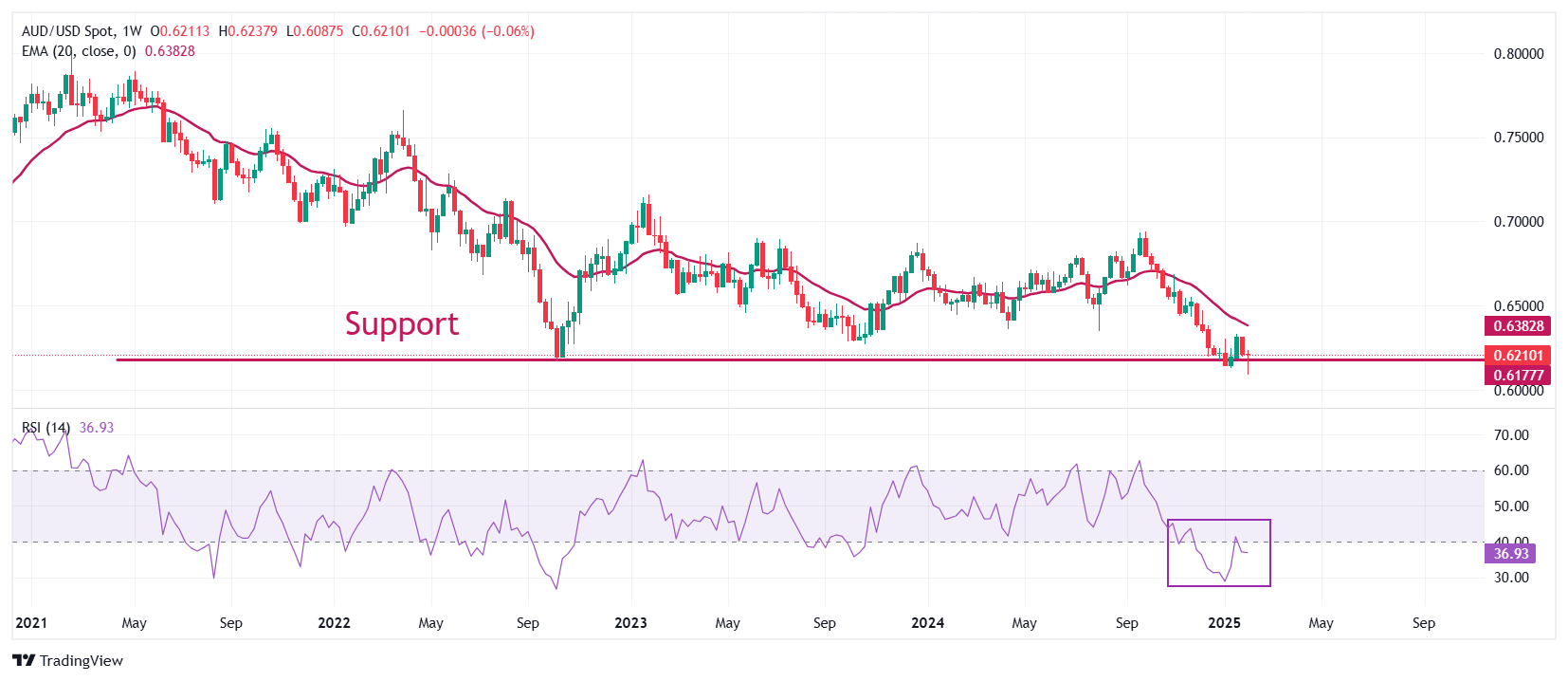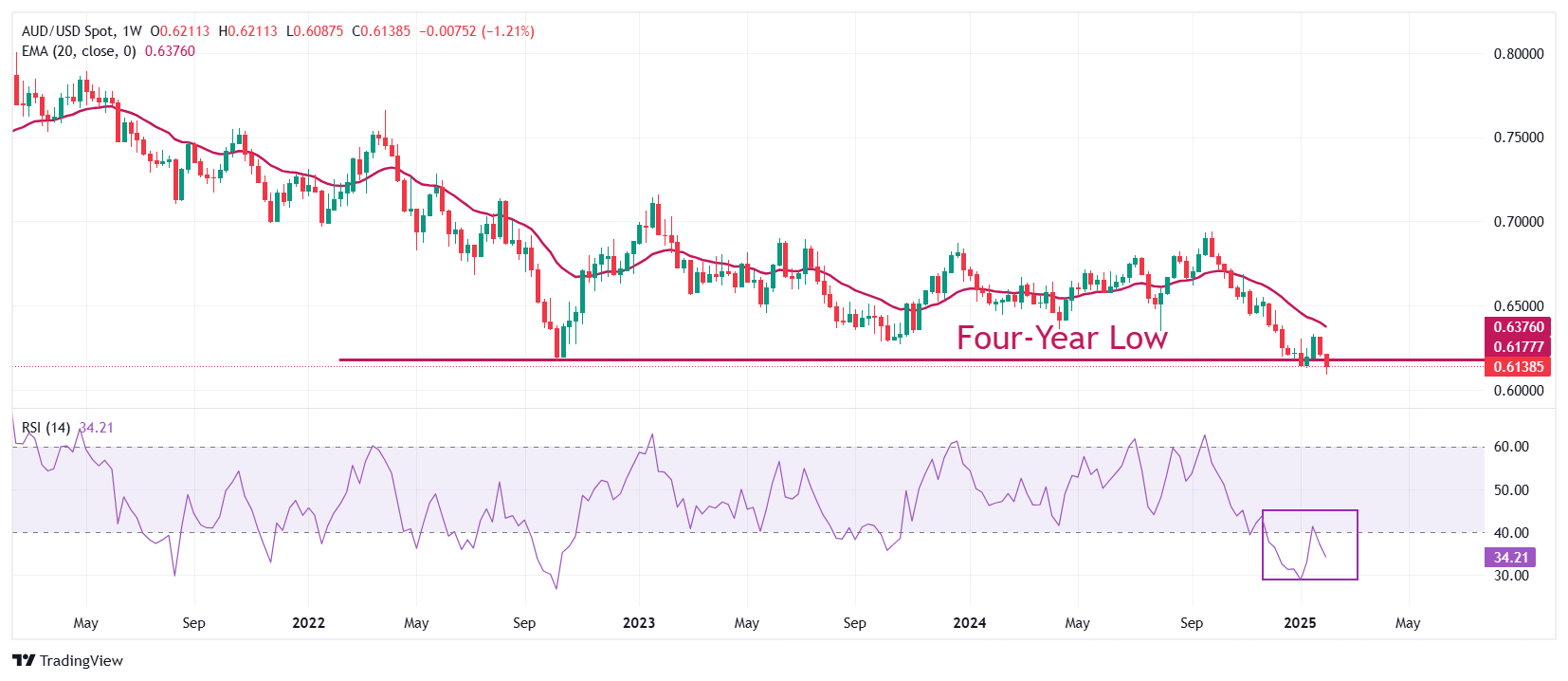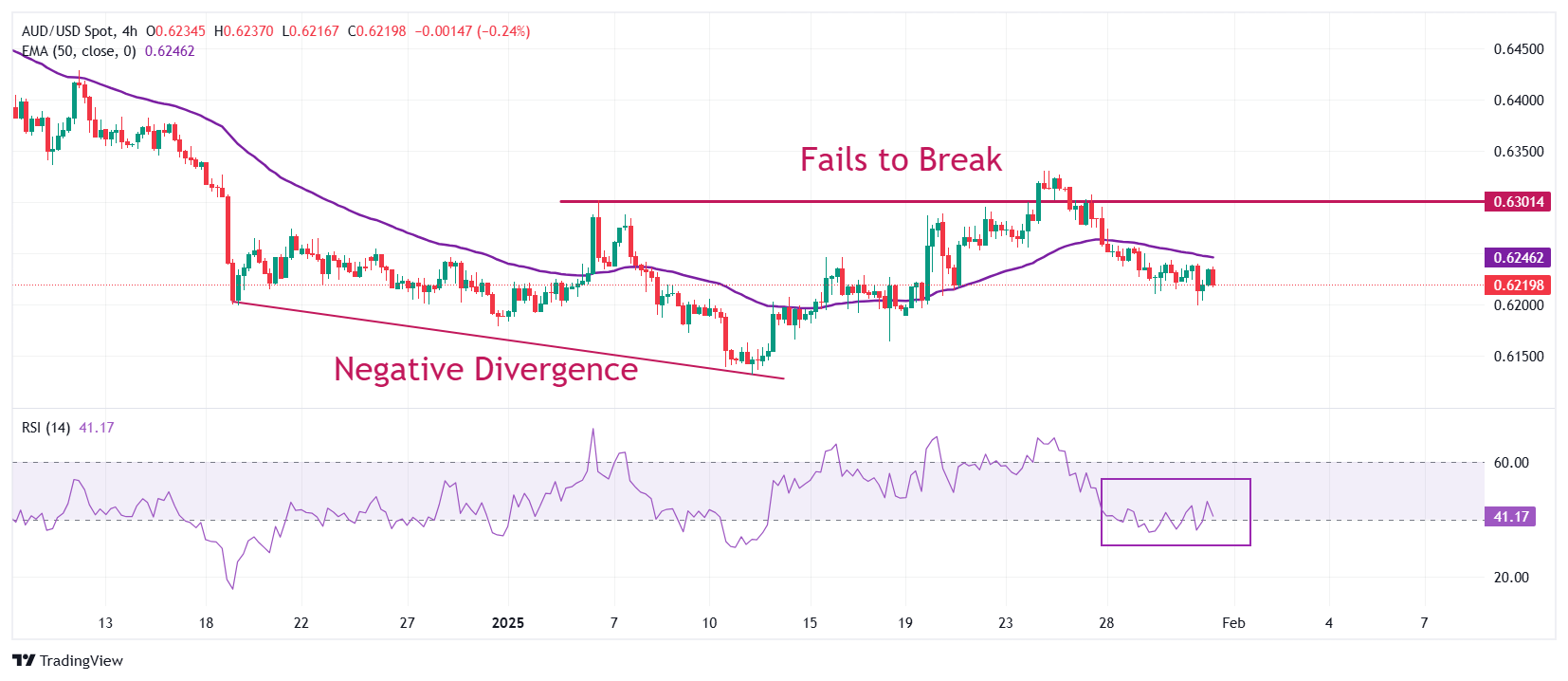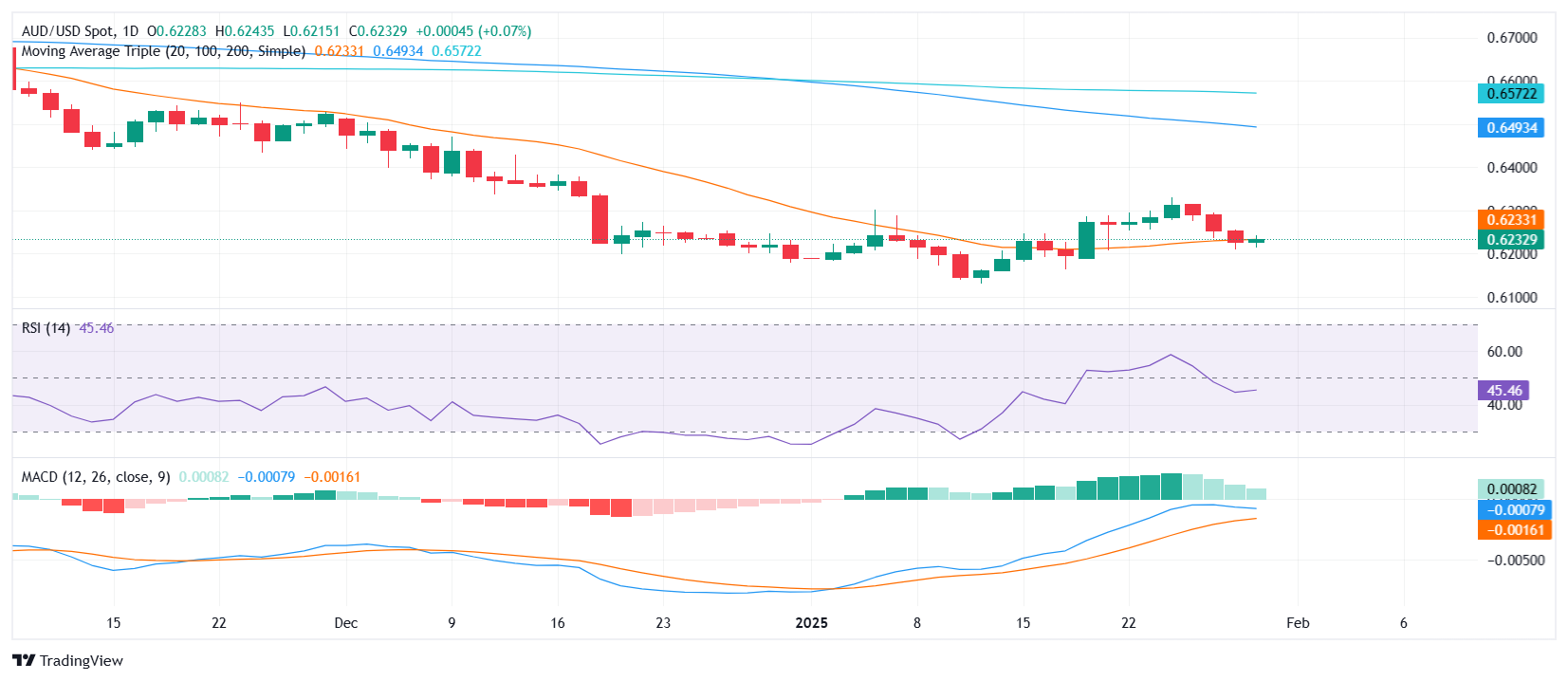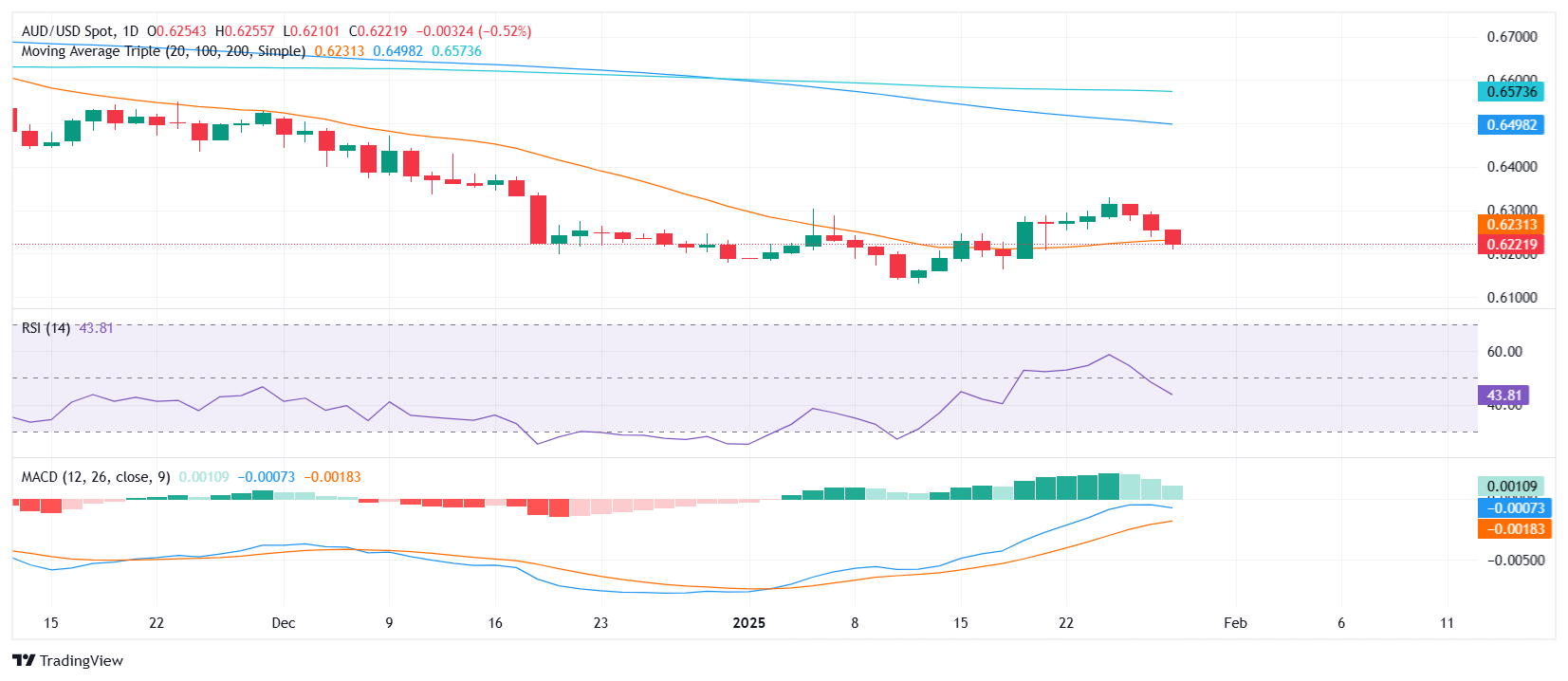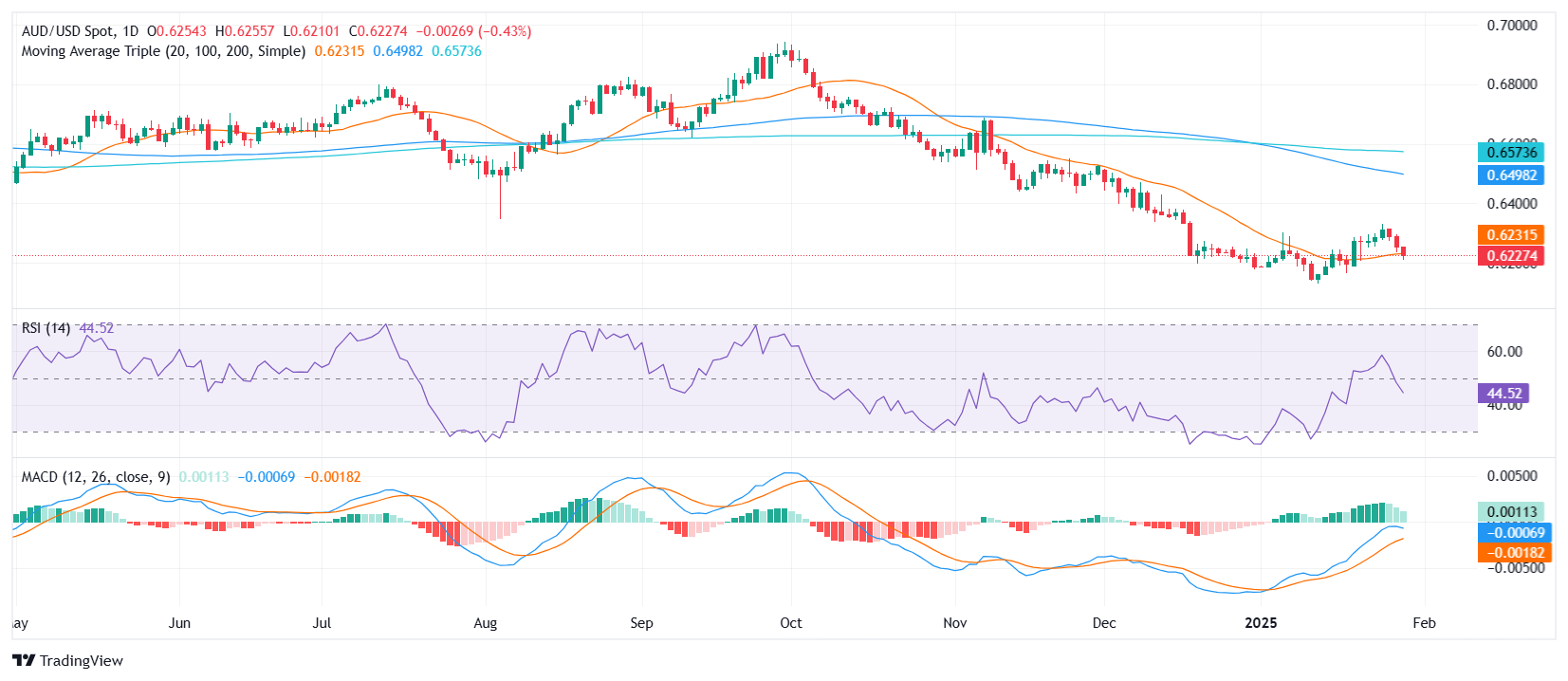- Analytics
- News and Tools
- Quotes
- Chart and quotes for AUDUSD
CFD Trading Rate Australian Dollar vs US Dollar (AUDUSD)
| Date | Rate | Change |
|---|
Related news
-
06.02.2025 10:42AUD/USD: Can edge higher and test 0.6310 – UOB Group
While conditions remain overbought, AUD could edge higher and test 0.6310. A sustained rise above this level is unlikely. In the longer run, If AUD closes above 0.6310, it could trigger an advance to 0.6355, UOB Group’s FX analysts Quek Ser Leang and Peter Chia note.
Above 0.6310, AUD can trigger an advance to 0.6355
24-HOUR VIEW: “We noted yesterday that ‘there has been an increase in momentum, and today, a break above 0.6265 will not be surprising.’ However, we indicated that ‘overbought conditions suggest any further advance is unlikely to reach the major resistance at 0.6310.’ Our view was not wrong, as AUD rose to 0.6296, closing at 0.6285 (+0.45%). While conditions remain overbought, AUD could edge higher and test 0.6310 today. A sustained rise above this level seems unlikely. On the downside, support levels are at 0.6265 and 0.6245.”
1-3 WEEKS VIEW: “In our update from Tuesday (04 Feb, spot at 0.6215), we highlighted that the recent ‘buildup in downward momentum has largely faded.’ We expected AUD to ‘trade in a range, probably between 0.6080 and 0.6310.’ AUD edged higher to a high of 0.6296 yesterday (Wednesday). Upward momentum is beginning to build, and if AUD closes above 0.6310, it could trigger an advance to 0.6355. The chance of AUD closing above 0.6310 will increase in the coming days as long as 0.6200 (‘strong support’ level) is not breached.”
-
06.02.2025 08:46AUD/USD remains weak as US-China trade tensions escalate with new tariffs
-
05.02.2025 11:47AUD/USD soars to near 0.6300 as market sentiment turns cheerful
-
05.02.2025 09:35AUD/USD: Unlikely to reach the major resistance at 0.6310 – UOB Group
-
04.02.2025 13:42AUD/USD Price Forecast: Recovers above 0.6200 as US Dollar gives up gains
-
04.02.2025 09:00AUD/USD: Downward momentum fades – UOB Group
-
03.02.2025 11:47AUD/USD Price Forecast: Posts fresh four-year low near 0.6100
-
03.02.2025 11:12AUD/USD to drop further – UOB Group
-
02.02.2025 23:22AUD/USD falls to near 0.6150 after Trump sets tariffs
-
31.01.2025 16:17AUD/USD edges higher despite tariff concerns
-
31.01.2025 10:56AUD/USD Price Forecast: Falls back as US Dollar refreshes weekly high
-
30.01.2025 16:15AUD/USD neutral as US GDP data misses expectations
-
30.01.2025 11:50AUD/USD consolidates around 0.6220 as US Q4 GDP takes centre stage
-
29.01.2025 19:10AUD/USD declines as Fed’s hawkish stance weighs on Aussie
-
29.01.2025 15:46AUD/USD slides as weak inflation data fuels RBA rate cut bets
-
29.01.2025 11:31AUD/USD slumps to near 0.6220 on soft Aussie CPI, Fed policy in focus
-
29.01.2025 10:15AUD/USD is underperforming at the moment – BBH
-
29.01.2025 09:37AUD/USD: Currently a pullback is under way – Societe Générale
-
28.01.2025 20:28AUD/USD slides on trade tensions, awaits Fed and Australian CPI
-
28.01.2025 14:44AUD/USD plummets below 0.6250 as US Dollar strengthens amid dismal market mood
© 2000-2025. All rights reserved.
This site is managed by Teletrade D.J. LLC 2351 LLC 2022 (Euro House, Richmond Hill Road, Kingstown, VC0100, St. Vincent and the Grenadines).
The information on this website is for informational purposes only and does not constitute any investment advice.
The company does not serve or provide services to customers who are residents of the US, Canada, Iran, The Democratic People's Republic of Korea, Yemen and FATF blacklisted countries.
Making transactions on financial markets with marginal financial instruments opens up wide possibilities and allows investors who are willing to take risks to earn high profits, carrying a potentially high risk of losses at the same time. Therefore you should responsibly approach the issue of choosing the appropriate investment strategy, taking the available resources into account, before starting trading.
Use of the information: full or partial use of materials from this website must always be referenced to TeleTrade as the source of information. Use of the materials on the Internet must be accompanied by a hyperlink to teletrade.org. Automatic import of materials and information from this website is prohibited.
Please contact our PR department if you have any questions or need assistance at pr@teletrade.global.
